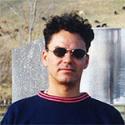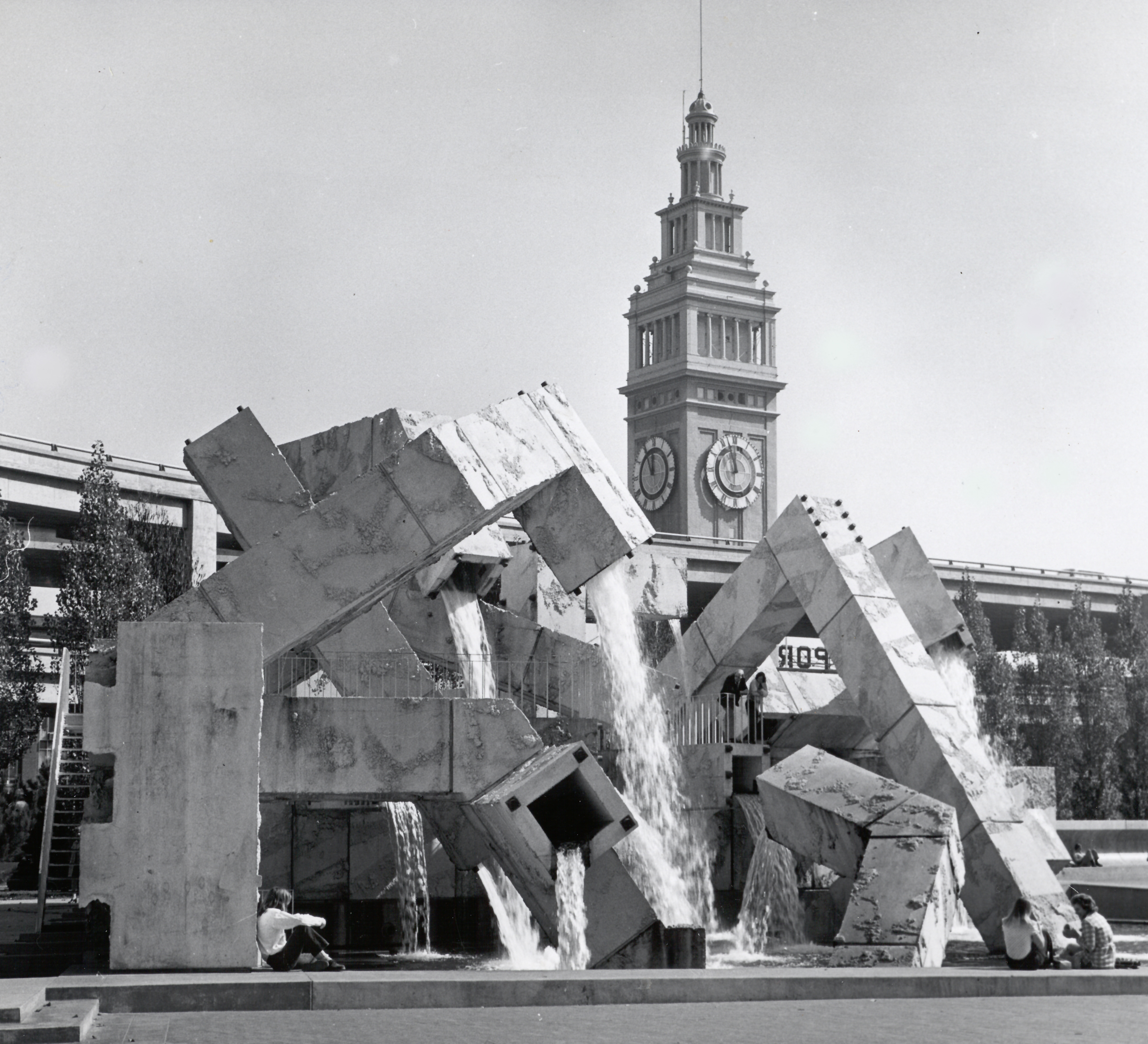
Building A Better Future At California College Of The Arts
By Mark Taylor

Aerial rendition of the new campus at California College of the Arts. Image courtesy Studio Gang and Kilograph
What does it take to design and produce a structure dedicated to design and production? I pondered this question recently while on a hardhat tour of California College of the Arts' new 82,300 square foot complex, which will open with a series of public events in October 2024
Passing a worker smoothing the finish on a metal door frame, I noticed their current task sat amidst a stack of dozens more. Countless other small teams were engaged in similar minutia throughout the site, representing the final phase of a decade-long project now sprinting toward completion. It was hard to imagine the number of details large and small that would require attention between my mid-July visit and the start of the school year. It was equally difficult to fathom the process that went into creating the environment that will shape the future of one of the world's premiere art schools.
At its inception the project faced several challenges, primary among them was the unification of two campuses with distinct personalities. Founded in 1907, California College of the Arts and Crafts (now CCA) located in Oakland since 1922, expanded to San Francisco in 1996 when it took over a Greyhound bus maintenance building at the bottom of Potrero Hill. The school's steel, concrete, and glass structure fit perfectly in the cement desert below the 280 freeway, across railroad tracks from UCSF, and adjacent to the city's design center. By contrast, the Oakland campus was located on a historic hilltop estate populated by wooden buildings, sprawling lawns, and shade trees. How could the new complex import that bucolic feeling into its industrial location while opening space for more creative collaboration between the school's 32 art and design programs? How would the institution integrate more effectively into the local arts community? How might this huge project be sustainably accomplished, energy and carbon neutral (now and in the future)? Will this new environment inspire its users to imagine and build a more rational future?
Steve Wiesenthal, Campus Environments Principal and leader of the San Francisco office of Studio Gang, the architecture and design firm that won the project, says the effort began with input from the school's president, its trustees, and, most importantly, its students. In a series of retreats, members of the art school's faculty were asked to share two objects, one representing their current conception of CCA and another that symbolized its future. The variety and creativity of this input both inspired the firm and determined the simplicity of their ultimate design. Wiesenthal hopes the resulting facility expresses "an elegant straightforwardness without a lot of embellishment. The idea was for the building to be the background rather than loudly expressing our own artistic vision. It should be the canvas for what these students and faculty produce."
The concept, which then made clear all the resulting details and decisions, was to import a mini campus — with as much of the Oakland location's qualities as possible — into the San Francisco hard space. Each area would house a "neighborhood" with its own infrastructure and resource requirements; juxtapositions between these neighborhoods could spark unexpected collaborations, unlocking untapped creative potential.
CCA's new president, David Howse, says the school's reconfiguration is designed to ask questions, not only of students and faculty, but also of the broader community: "How do we work together? What are the things we can do together that we can't do on our own? This building is a symbol of our desire to connect. The openness, the blurred lines between disciplines, that sense of collaboration is not only a physical gesture, but also expresses our values. It's not just about CCA, but also what's possible in San Francisco."
From the start, Wiesenthal says, Studio Gang believed it was "really important to relate to the existing building. When you come out of the nave [the central section of CCA's 1996 structure] you are in one of the campus's "maker" yards on axis with the main entrance into the new building. A 50,000 square foot at-grade concrete plinth houses ceramics, jewelry and metal arts, the wood shop, and furniture making." A central corridor stretches from the school's old front entrance, through a courtyard, into one of the new structures, all the way to a loading dock in the rear.
"When you're inside what looks like this massive building," Wiesenthal continues, "you see natural light right away. What really excites me is wherever I am inside I see the outside." This design choice is both aesthetic and practical, advancing the school's sustainability goals and intentionally making its environmental philosophy visible. "Carving out those maker yards enabled us to have natural light and air even in the heavy fabrication spaces. There is something called a 'night flush ventilation system' that greatly reduces the size of the mechanical equipment and the amount of energy the building consumes." Rooftop photovoltaics generate renewable energy for the complex.
"Whenever you're working on a building that is about education," says Wiesenthal, "you want the building to educate as well. This is not an opaque project in any sense of the word. We wanted the architectural expression to make legible the physical forces of nature and the materials we use to address them." The complex's second level boasts California's first exposed mass timber pavilion (housing classrooms and graduate studios) that makes visible how the architecture handles the region's potential for seismic activity.
Across a massive amount of landscaping (huzzah!), including green roofs and a garden dedicated to growing plants for textile dye production, a second such pavilion relocates The Wattis Institute for Contemporary Arts, the school's gallery, on campus, hopefully attracting more attention to the CCA's curatorial program and sparking greater dialogue with other such activities located nearby.
CCA's Maker/Meets/Future capital campaign raised $123 million to pay for and sustain the effort. The expanded campus arrives at the end of a technology-driven boom that created an economic monoculture (particularly dismissive of and devastating to the local art community), which went bust during the pandemic and kicked off the current narrative of a "once great" city laid low. After the San Francisco Art Institute's recent closure, it would be nice to think of this project as a possible rebuttal to the tired doom loop scenario. **
The design of our environment influences the shapes we make with our bodies and therefore the forms we imagine possible in our minds. President Howse, paraphrasing Irish poet, John O'Donohue, says, "'Not only does the soul hunger for beauty, we are most alive in its presence.' I think CCA's new configuration is an attempt to claim that beauty. The building is thinking, 'How do I create the conditions for individuals to be their best selves, to make their best work for a better society, a better community, a better world?' Isn't that what we want to project into the world — a place where more people feel like they belong and can thrive? That is the future."
** Following the print publication of this article, CCA announced it was facing a $20 million deficit and is seeking a possible merger to weather increasing headwinds facing upper education in the United States.
→ The California College of the Arts campus will be open this fall. See event information



